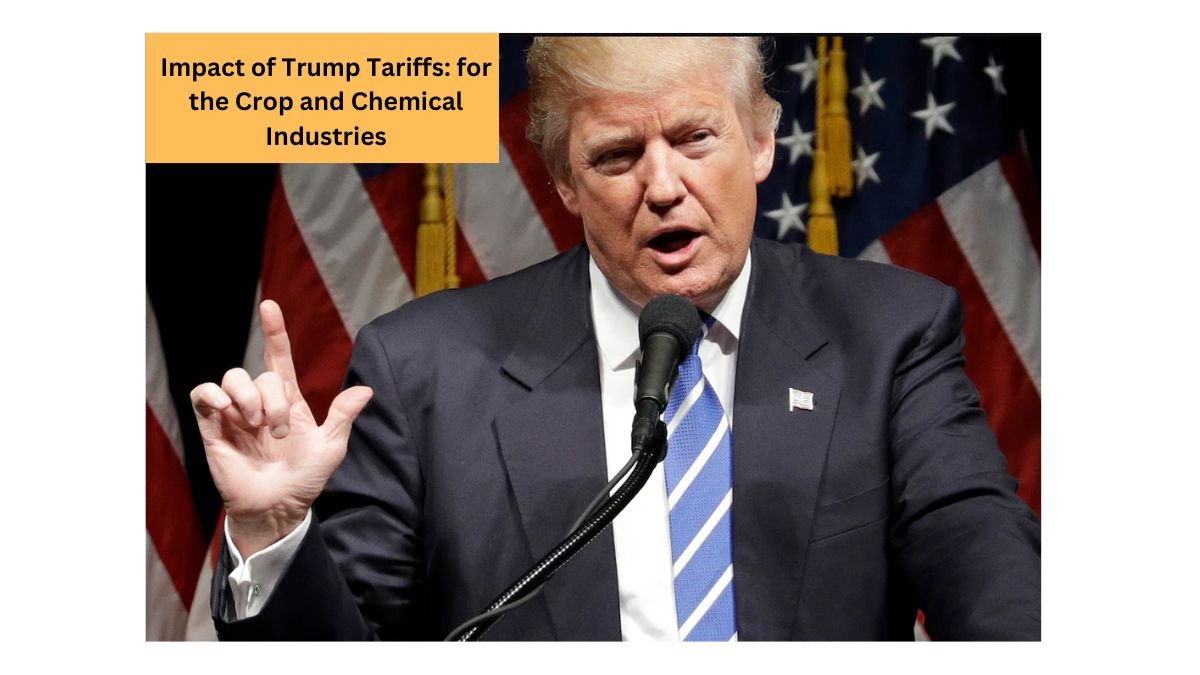Impact of US Tariffs on the Chemical Industry and India’s Market Opportunities
The escalating trade tensions between the United States and China have led to the implementation of reciprocal tariffs, which are already beginning to affect various industries, including chemicals and agriculture.
As of April 2, 2025, these tariffs are expected to have significant implications, not only in the US but also in global markets, including India.
The chemical industry, in particular, is facing disruptions, which could lead to price increases, supply chain bottlenecks, and a shift in market dynamics.
However, some Indian chemical companies may see new opportunities as a result of these changes.
US Tariffs and Their Ripple Effect on the Chemical Industry
The announcement by the US administration, led by President Donald Trump, to impose reciprocal tariffs has started to influence the global chemical industry.
According to a recent report by Kotak Institutional Equities, India’s exports of organic and inorganic chemicals saw a decline of 4.2% month-over-month (MoM) and 1.9% year-over-year (YoY) in January 2025.
On the other hand, imports surged by 9.7% MoM and 36.9% YoY. This shift highlights the ripple effect of tariffs, with India witnessing both a decline in exports and an increase in imports, especially from markets that are still unaffected by the tariff war.
In the US, the chemical sector is also facing its own challenges. US chemical production dropped by 1.2% MoM in January 2025 due to disruptions caused by tropical storm Enzo.
Despite this, production remained up by 3.2% YoY on a 3-month moving average basis, which indicates that overall growth in the sector still persists, though tempered by ongoing external challenges.
Potential Impact of Tariffs on Chemical Prices and Market Competitiveness
The tariffs, primarily targeted at curbing China’s trade practices, are expected to disrupt global chemical supply chains and raise prices.
However, the full extent of the impact remains uncertain as industries adjust to the new tariff regime.
As noted in the Kotak report, the tariffs could affect both end-demand for chemicals and the cost structure, potentially leading to price hikes.
While it’s too early to assess the overall economic consequences of this tariff war, it comes at a time when the chemical sector was already grappling with a weak demand environment in recent years.
For Indian chemical companies, the tariffs could have mixed effects. While there is the risk of reduced competitiveness in the US market, Indian chemical companies could also benefit from an influx of orders from countries seeking to diversify their supply chains away from China.
This shift could present new export opportunities for Indian producers, particularly those with cost advantages and the ability to meet new demand requirements.
Read Also:- Dearness Allowance Gets Absorbed: Central Government Employees’ DA Merged with Basic Salary
Price Trends and Product-Specific Impacts
The price dynamics within the chemical sector reflect the broader disruptions caused by the tariff conflict.
For instance, refrigerant prices in China have remained firm, which has driven up the import prices of R32 refrigerants into India.
Meanwhile, palm oil prices have remained high following India’s recent duty hikes. In contrast, prices of soda ash are still depressed, and phenol spreads have fallen sharply in India.
Interestingly, prices of agrochemicals have generally softened, with notable exceptions like 2,4-D and cypermethrin, which continue to see price hikes.
The fertilizer sector has also felt the strain of the tariff war. Ammonia import prices into India have dropped over the past month, while urea prices have seen a significant increase.
These fluctuations in pricing are indicative of the broader volatility in global supply chains as tariffs continue to impact production costs and demand dynamics.
Tariff War’s Impact on Crop Prices and Agrochemical Demand
In the agricultural sector, the tariff war has created volatility in crop prices. Futures prices for key crops in the US, including corn, soybeans, and wheat, dropped by 6-9% in the past month due to the ongoing trade disputes with China.
Conversely, corn futures in Brazil saw a 10% rise, positioning Brazil as a potential beneficiary of the US-China trade war.
As crop prices play a crucial role in driving agrochemical demand, the declining prices in the US may slow down demand in that region.
On the other hand, markets like Brazil, where crop prices are rising, may see an uptick in agrochemical demand.
The volatility in crop prices has been a significant factor for agrochemical companies. Bayer, a major player in the agrochemical space, has predicted a “slow market recovery” in 2025, which aligns with guidance from other companies such as Corteva, which expects flat industry revenues for the year.
In India, the expected heatwave during the March-May period could further exacerbate the situation, especially for wheat production, which could face risks from high temperatures impacting yields.
Additionally, the spread of bird flu in India is further complicating the agricultural landscape.
India’s Response to the Tariff War
In response to the growing concerns surrounding the tariff war, Indian officials have been proactive in engaging with the US government to mitigate potential disruptions.
Commerce Minister Piyush Goyal recently traveled to the US to discuss possible solutions and negotiate tariff reductions on specific industrial goods.
However, India has expressed its strong stance in protecting its agricultural sector, making it clear that any discussions on tariff reductions will not come at the cost of the country’s farmers’ interests.
Future Outlook for Indian Chemical Companies
Looking ahead, the ongoing trade tensions between the US and China are likely to continue affecting the global chemical market.
Indian chemical companies, while facing some challenges in terms of competitiveness in the US market, may also find new opportunities in markets seeking alternatives to Chinese suppliers.
By focusing on quality, cost competitiveness, and meeting evolving demand patterns, Indian companies could position themselves to capitalize on the shifting global trade landscape.
Additionally, the expected volatility in crop prices and the growing demand for agrochemicals could present opportunities for Indian chemical exporters.
As the tariff war progresses, it will be essential for Indian chemical companies to stay agile and adjust their strategies to align with the changing market dynamics and demand flows.








